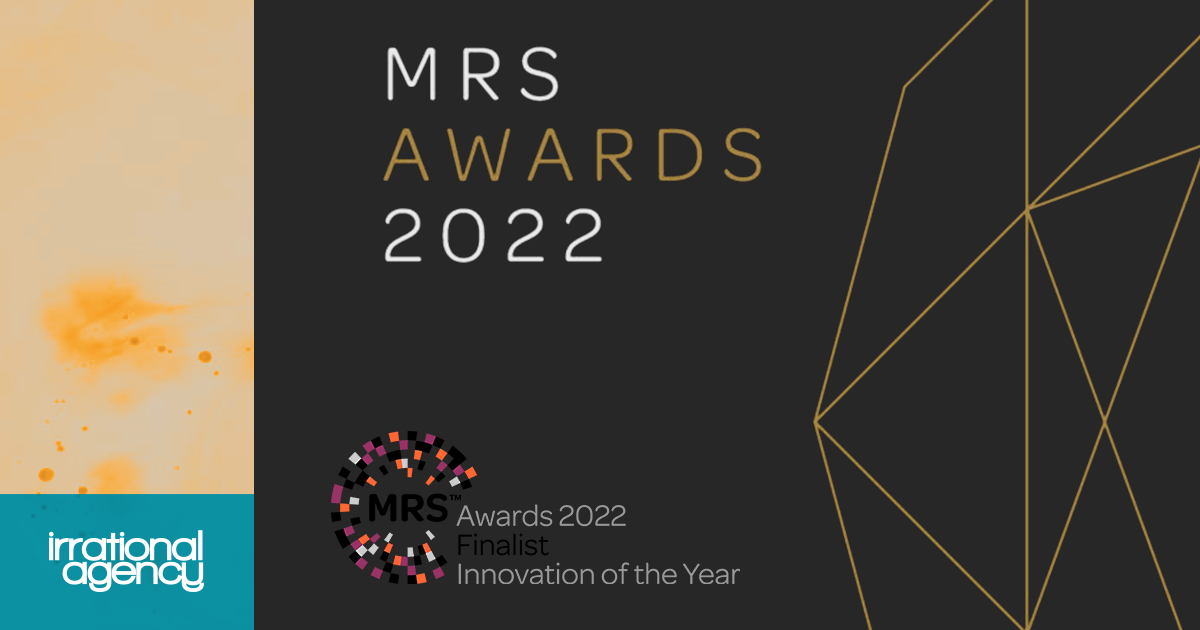
System 3: Award Nominated Innovation
 Irrational Agency
Irrational Agency
This week Irrational Agency is attending the MRS Awards 2022. Our System 3 methodology has been nominated for the Innovation of the Year award! We’re up against some stiff competition but we’re delighted and honored to be nominated with a new behavioural methodology that continues to create significant impact for our clients.
But for the uninitiated, what is System 3?
In recent years we’ve become used to thinking about decisions as “system 1” or “system 2”. System 1 choices are automatic decisions, made without thinking, based on an immediate emotional or sensory reaction. System 2 is used to stop and rationally calculate the consequences of our choices, and determine the best cost-benefit trade-off. However, consumer decision making is more than a purely emotional or rational assessment.
System 1 and 2 processes don’t capture every decision. Indeed they might only encompass a minority of our daily choices. Recent work in neuroscience and psychology has discovered another way of making choices: with the imagination. Customers imagine their possible futures: the outcomes they would experience after a choice, and how those outcomes will make them feel. The future that makes them feel happiest will be the one they choose. These choices use different parts of the brain than System 1 and 2. They are called System 3 choices.
System 3 Choices
Think about how you might buy a car. System 1 would suggest that you see a color, or shape, or brand of car, immediately fall in love with it and buy without thinking. System 2 implies that you calculate the price, financing options, fuel efficiency, resale value – and pick the model that makes the most financial sense.
A System 3 decision would look like this: imagine yourself driving that car. Feel, in your mind, the sensations of the seats and how it drives. Imagine how your partner or your friends would view you in it. Consider, too, the impact on your bank account and what else you would be missing out on to pay for it. How you’d feel about the environmental impact and the safety this model offers your family. How do you feel? Is it good? Maybe you also have another model in mind. Try the same process on that. Does it feel better? The car you feel best in – within this mental simulation – is probably the one you’ll choose.
This System 3 process applies to our big choices in life, but also to smaller ones. At the shelf, considering a new breakfast cereal or a new skincare product, you’ll imagine how it tastes or feels before buying it. You might test out the moisturizer from a sample jar, but you still need to project yourself into the future – will it feel the same when you’re applying it before bed, or after you wake up? Your System 3 imagination combines past and present experiences with possible futures and works out which it enjoys most.
System 1 still has a place: once you are familiar with a product, you might buy it automatically. And we still use system 2 for lots of financial and practical calculations. Indeed, System 3 incorporates elements of systems 1 and 2 in how it works.
When to Consider Using System 3
Traditional research is often based on asking respondents about their past choices, but when it comes to new scenarios where they have no previous experience, your customers are probably using System 3 to make their decisions. If you’re researching new experiences, such as a cost of living crisis, new products and pack designs, or new categories, System 3 is the only tool that will be able to predict the success of what you’re testing. The methodology is also valuable in providing insights for brand building or understanding complex decision making with consequences beyond just a few moments after purchase.
System 3 will revolutionise the way we understand, research, and model consumer choice. If you’re interested in finding out how System 3 can support your business objectives, get in touch at hello@irrationalagency.com
